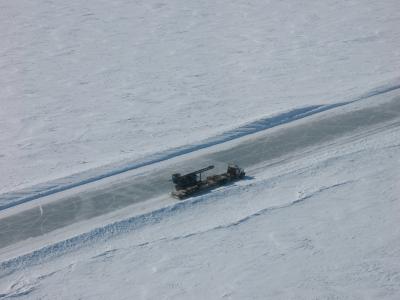Measuring the Impacts of Arctic Change on Transportation Systems
The Arctic faces unique transportation challenges. Community remoteness necessitates long travel distances to essential services and a common reliance on imported supplies. Harsh conditions limit options for passenger and freight transport. However, many of these options are threatened by the effects of climate change such as sea ice loss and permafrost degradation as well as socioeconomic stressors. Understanding these threats requires methods to measure how stressors affect Arctic transportation systems in terms of real-world, policy-relevant indicators. A review article synthesizes existing methods and finds that more research is needed to understand both socioeconomic stressors and adaptation options.
While many researchers have developed methods to measure the impacts of stressors on Arctic transportation systems, the methods cover a broad range of stressors, transportation modes, and geographic regions. Existing methods need to be synthesized and organized to allow decision makers to identify key vulnerabilities and prioritize adaptation options. The review combines methods into a holistic framework, filling the identified need. It highlights trends in methods and their findings, gaps in the literature, and opportunities for the new framework to inform future research and decision-making.
Transportation options in the Arctic include seasonal modes such as summertime waterway travel and temporary winter roads constructed from ice and snow. Some Arctic communities also have access to year-round infrastructure including roads, railroads, and airports. Trail systems are used for local travel and subsistence hunting via snowmobile and on foot. A new review synthesizes literature methods for measuring the impacts of climate and socioeconomic change on these transportation modes. For example, projected changes to snow and ice dynamics can be used to predict the length of future marine shipping and winter road seasons. Road damage costs can be estimated based on permafrost degradation predictions. Local socioeconomic data can be used to measure the impacts of employment opportunities on offroad vehicle accessibility. The review synthesizes 37 methods that span a range of modes and impacts. It also assesses whether the methods incorporate adaptive capacity or the extent to which transportation systems can prepare for and respond to change. Socioeconomic impacts and adaptive capacity are highlighted as opportunities for further research because few methods currently address either. Future research should also explore how applying the methods can inform decision-making and holistic assessments of Arctic vulnerability.

